We believe everyone should be able to make financial decisions with confidence. And while our site doesn’t feature every company or financial product available on the market, we’re proud that the guidance we offer, the information we provide and the tools we create are objective, independent, straightforward — and free.
So how do we make money? Our partners compensate us. This may influence which products we review and write about (and where those products appear on the site), but it in no way affects our recommendations or advice, which are grounded in thousands of hours of research. Our partners cannot pay us to guarantee favorable reviews of their products or services. Here is a list of our partners.
When the tread depth gets too low, or your tires are 6 years old or older, it's time for new rubber.
Many or all of the products featured here are from our partners who compensate us. This may influence which products we write about and where and how the product appears on a page. However, this does not influence our evaluations. Our opinions are our own. Here is a list of our partners and here's how we make money.
Your tires look fine but, then again, they’ve been on your car a long time. So you might have the nagging thought: When should I change my tires?
In addition to a blowout or a flat, there are two factors that will help you determine when you should replace your tires: tread depth and manufacture date.
When the tread is worn down, tires lose traction during braking and won’t grip the road well when driving in the rain, ice and snow. But even if there’s plenty of tread left, tires should be replaced if they’re too old, at least every six years. That's because over time, the rubber will dry and crack, possibly leading to a blowout or flat tire.
We’ll tell you how to check your tread depth to find out if your tires are still safe and how to determine when your tires were manufactured to see if it’s within the time period recommended by experts.
Here’s a quick look; read on for the details:
Replace your tires… | How to tell it’s time |
|---|---|
When tread depth is too low | Use the quarter and penny tests |
At least every six years | Check the manufacture date on tire wall |
Because you’ll need to check the tread and read the sidewall of your tires, you might want to put on a pair of gloves to keep your hands clean. Also, you’ll be kneeling next to your car, so make sure it’s parked in a safe place with good lighting.
The simplest way of measuring tread depth is by using a penny and a quarter, says Gene Petersen, tire program manager for Consumer Reports, a product review site.
Start by inserting the quarter into the tread in the center of the tire with George Washington’s head pointing toward the tire.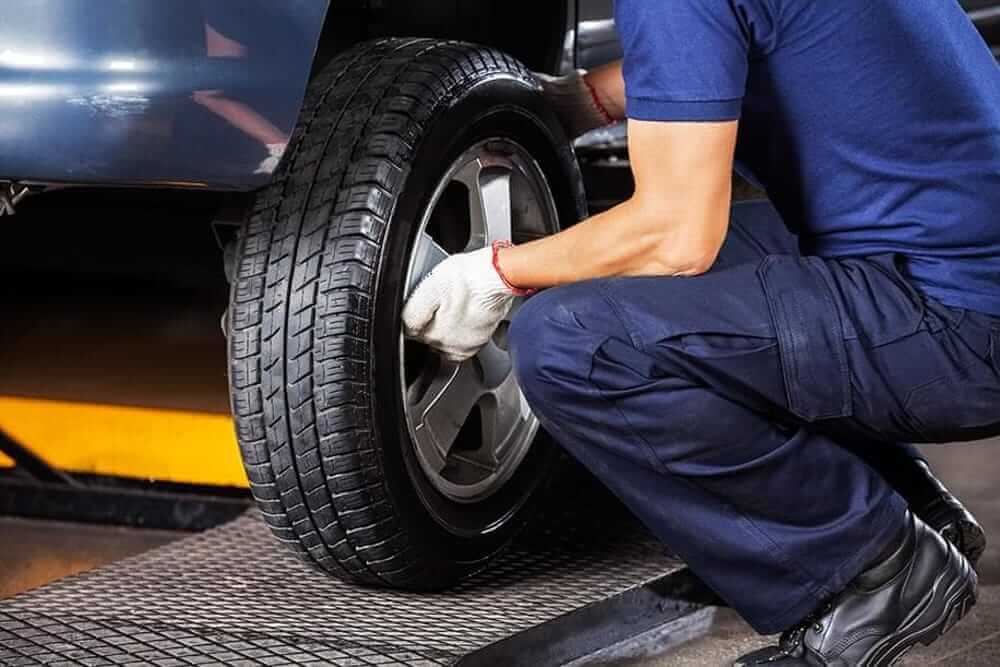 If the top of his head is even with the tread, the tires are still safe to drive on, but it’s time to start shopping for new ones, he says. This will give you enough time to choose the best tires for your car and shop for a good price.
If the top of his head is even with the tread, the tires are still safe to drive on, but it’s time to start shopping for new ones, he says. This will give you enough time to choose the best tires for your car and shop for a good price.
If you insert a penny, also head-down, into the center of your tire’s tread and it’s even with the top of Abraham Lincoln’s head, the tires are becoming unsafe. You should replace your tires right away.
By planning before you go tire shopping, you’ll wind up with a safe and comfortable ride and you might even save some money.
How often you should replace your tires depends on your driving — the more you drive, the faster you’ll wear down the tread — and other factors, such as weather and road conditions. But even if your tires have plenty of tread left, experts recommend that you replace tires that are 6 years old or older, says Petersen.
The Department of Transportation code on a car's tire shows the week and year it was manufactured.
To see how old your tires are, check the four-digit Department of Transportation code on your tire wall to find out when the tire was manufactured. The first two numbers stand for the week in the year it was made, and the other two are for the year. For example, if your tire has “1109” printed on it, then it was manufactured in the 11th week of 2009.
Finding the date code can be a little tricky. It’s usually preceded by the initials DOT. There are other numbers and letters after DOT; look for a set of four digits ending with two numbers that are recognizable as a year in the past.
A set of new tires can be pricey. But don’t put off replacing your tires, because they’re the most important safety feature on your car. New tires also can give your car a more comfortable ride, and some modern brands will even improve your car’s fuel economy. Check your tread depth and manufacture date, and you’ll know when it’s time to replace your tires.
About the author: Philip Reed is an automotive expert who writes a syndicated column for NerdWallet that has been carried by USA Today, Yahoo Finance and others. He is the author of 10 books. Read more
On a similar note...
Do you know when to replace your tires? The good news is gauging the health of your tires isn’t as complicated as you might think. In most cases, figuring out when it’s time for a tire replacement only requires a quick look with a keen eye and maybe the help of a copper penny. You need to know what portions of the tires to look at and what the key tire replacment indicators are. In this guide, we will provide you with all the knowledge you need to accurately assess your tires, determine if they need to be replaced and when, as well as some tips for picking new ones!
Here are the three key concerns related to tire replacement:
In this tire replacement guide, we’ll answer these questions and beyond so that you can feel confident you’re replacing your tires with the best choices for your driving needs, local climate and vehicle safety.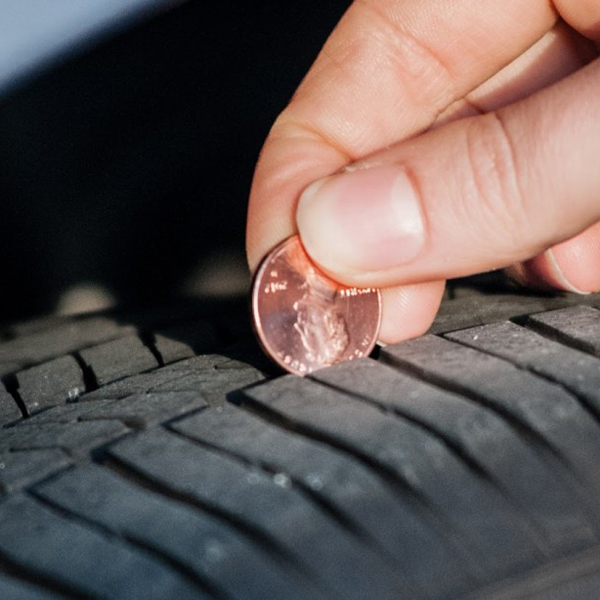
The most common question people ask is “How often should you replace your tires?“
Generally, there are two different factors that impact when to replace tires: wear and age.
Tire Wear: All tires eventually begin to experience wear. How the tire wears can be a indication of an issue with your alignment or tire pressure. Tire tread should wear evenly across the whole tire rather than on the inside or outside of the tire. The wear on your tires will happen regardless of how good of a driver you are, although it can be accelerated if you don’t take proper care of the tires.
Tire Age: Tire aging occurs when components of the tire, including the rubber, begin to change over time. This can happen due to environmental impacts and storage conditions, as well as the amount of usage the tire sees when being driven, or the tire sitting with no use.
Image Source: FIHSMV
Of course, unless you’re a tire expert, it can be difficult to know exactly when tire wear and age indicate that a tire is no longer safe to drive and needs to be replaced.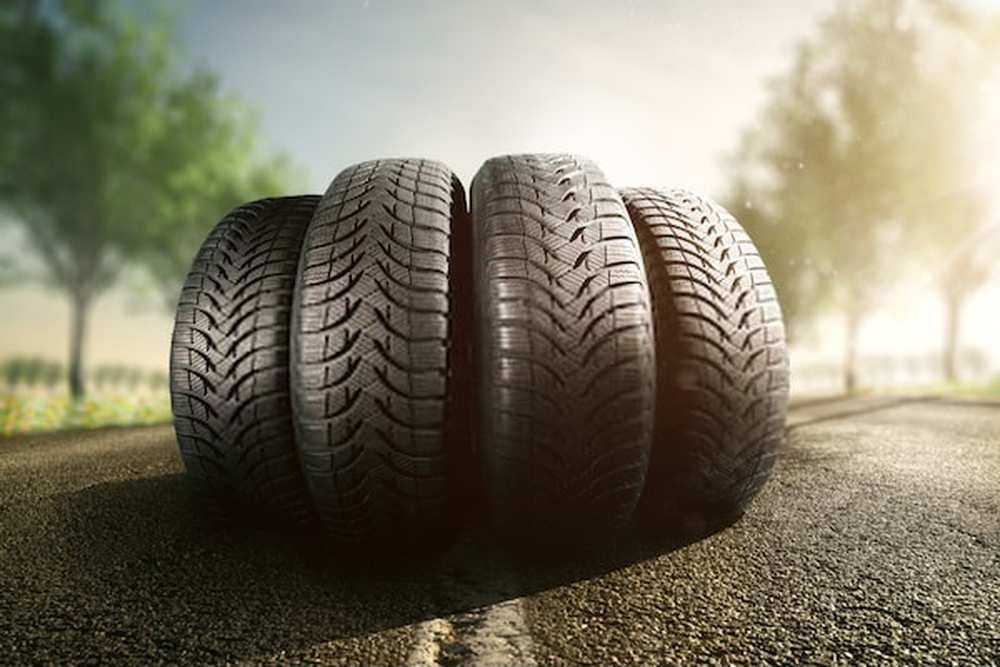 If you’re wondering, “How do I know when my tires expire? “ A better question is “How old are my tires and when should I change them?” To answer that question, it’s time to learn how to read your tires!
If you’re wondering, “How do I know when my tires expire? “ A better question is “How old are my tires and when should I change them?” To answer that question, it’s time to learn how to read your tires!
Every tire has an indication that states when it was made, down to the week and year. This can help you answer the question: how often you should change your tires – even if you’re not an expert on the subject.
Industry standards say you should replace passenger and truck/SUV tires on average at 6 years and before 10 years of age. The timing depends greatly on how the tires have been used and the weather extremes it has been subjected to. How a vehicle has been stored can also impact when a tire needs to be replaced. If your tire passes the penny test, and a visual inspection does not show any cracks or damage, but the tire is 6-10 years old, the wisest course of action is to have them inspected by a tire shop to determine if you need to consider replacing them.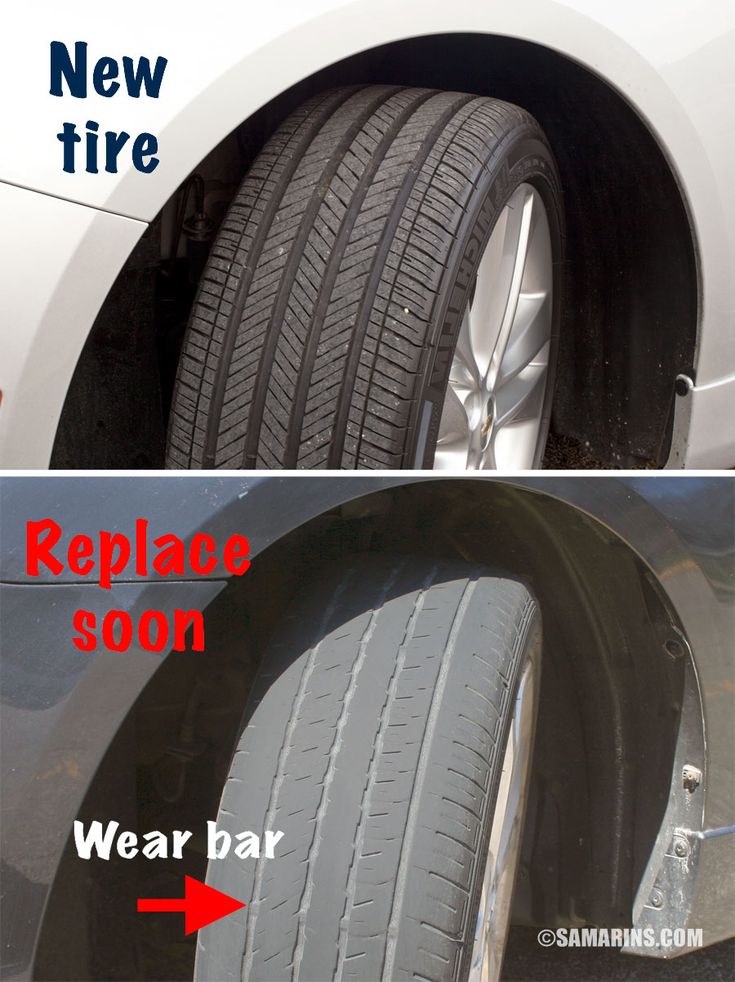
Knowing how often to replace tires isn’t just about taking good care of your vehicle and preventing expensive mistakes. Tires are an extremely important part of your vehicle’s safety.
Worn or old tires can lead to a variety of problems, including:
Additionally, uneven wheel alignments and balance problems will not only cause irregular and premature tire wear, they can cause expensive problems for your vehicle, leaving you dealing with a hefty car repair bill in the future.
Each year, roughly 11,000 tire-related wrecks occur on the road. Don’t blow off tire maintenance as something only “car people” do. Every driver on the road should are about the health and safety of their passengers and vehicles.
Many people ask “How long do tires last on average?“
The problem is, there’s not a set answer to that question – due to the variety of factors that can lead to a necessary tire replacement. These factors include:
These factors include:
Every driver faces different conditions and cares for their cars differently. The bottom line is that you need to be aware of your own driving habits, environment, and tires to ensure you’re replacing your tires when necessary.
The following tips will show you how to tell if tires are worn and need to be replaced soon. Although it is always best to seek professional help with tires, these signs will indicate that you should begin researching new tires for your car.
Although it is always best to seek professional help with tires, these signs will indicate that you should begin researching new tires for your car.
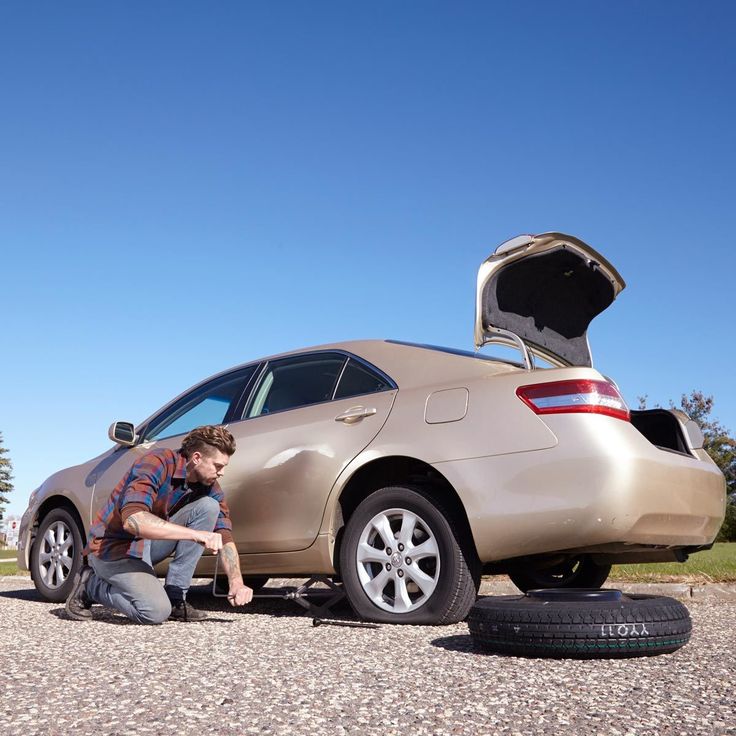 If your tires have been worn down unevenly, you may feel a vibration in the steering wheel when driving. Vibration can also be caused by poor alignment so it is important to have a tire professional determine the cause of the vibration.
If your tires have been worn down unevenly, you may feel a vibration in the steering wheel when driving. Vibration can also be caused by poor alignment so it is important to have a tire professional determine the cause of the vibration. Moisture can leak into the tire, causing the steel parts to rust. Lodged items can weaken the area of the tire and possibly lead to dangerous blowouts if not dealt with in a timely manner.
Moisture can leak into the tire, causing the steel parts to rust. Lodged items can weaken the area of the tire and possibly lead to dangerous blowouts if not dealt with in a timely manner.After you have figured out when to change tires, you’ll find that selecting replacement tires a bit of a process. You’ll need to start by assessing your driving habits, the types of terrain and seasons you will be driving in, to determine what you need in a tire. You should also evaluate how well you feel your current tires performed in longevity, handling, ride, noise and any other category you have noticed.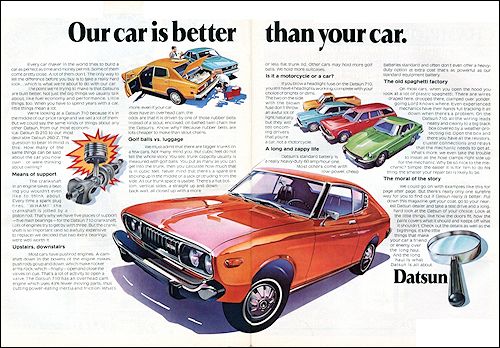
After that, you’ll be able to match your driving style to the perfect tire type. To help jumpstart your research, here are a handful of the most popular tire categories, seasonal applications, and the features that make them great fits for particular drivers’ needs.

 They can be used all year round and offer excellent traction and performance in all weather.
They can be used all year round and offer excellent traction and performance in all weather.Before you decide which tire you need, think about what kind of driving you do. If you drive primarily on the highway and city streets, you may need a highway or touring tire. On the other hand, if you typically drive on back roads AND need on-pavement capability, an all-terrain might be your best bet.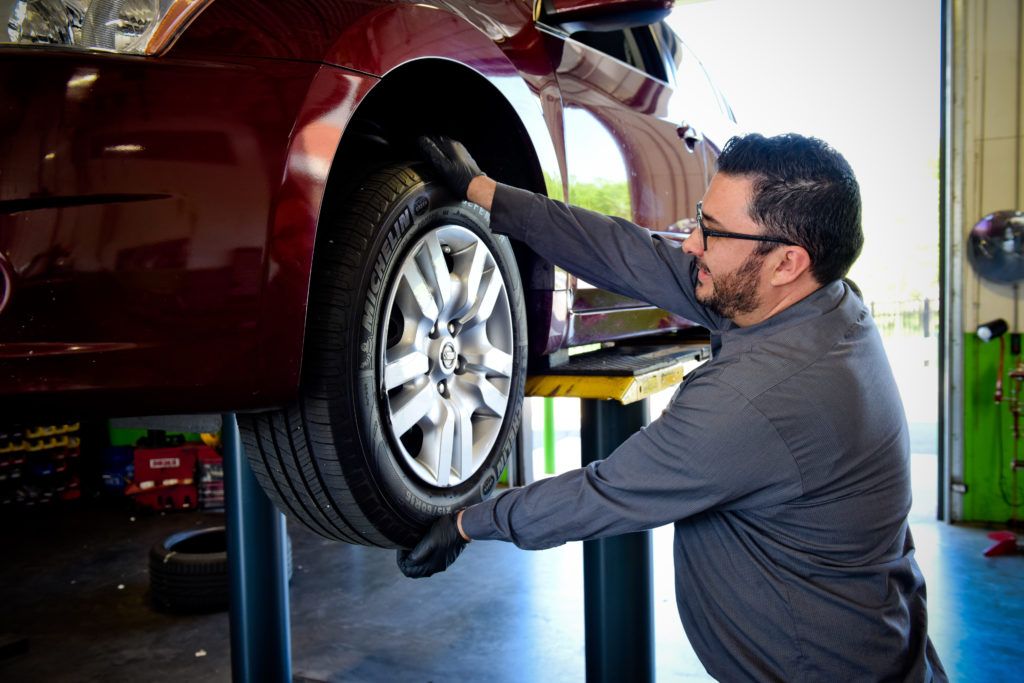
If you face severe winter weather during certain points of the year, you will likely need to upgrade to a tire that can handle those conditions.
First pick the category of the tire to fit your driving needs, then decide on the season that best suits the climate you live in.
The NHTSA has rated more than 2,400 tire lines. You can use the official NHTSA website to check out the details on specific tires.
The treadwear grade rates how well a tire compares to others in a specific test. A tire with a grade of 3000 wears three times as long as a tire that only has a grade of 100. However, you should keep in mind that different driving styles, road conditions, and levels of maintenance can also impact treadwear.
This refers to the tire’s ability to stop on different kinds of surfaces, including asphalt and concrete. AA is the best rating a tire can receive, followed by A, B, and then C.
The temperature rating indicates the tire’s resistance to heat. A is the highest rating, followed by B and then C.
Some people, in an effort to save money upfront on the tire replacement cost, turn to old (used) tires as replacements. However, this can be a risky strategy, even if it does save money initially.
Here are some of the issues you can face when buying second-hand tires as replacements.
Last but not least, people generally don’t pay attention to their spares as they decide when to get tires replaced. Because the spare isn’t used much, people assume that it doesn’t experience wear or tear and that it doesn’t need to be replaced.
However, even spare tires need to be replaced after a certain amount of time. Be sure to check the date of production on the spare before deciding not to replace it. If you’re not sure how to check the date of your tire, refer to our post on DOT Date Code.
Don’t forget to pay attention to visible kinds of age as well. Just because a tire hasn’t really been used doesn’t necessarily mean it stays protected from cracks or cuts, as well as other problems that come with age including:
Whether a tire has been driven or not, its lifespan can be affected by its storage condition and treatment. If you know you will be parking your vehicle for a period of time, it is a good idea to protect the tires from sun and freezing temperatures, move the vehicle periodically to prevent flat spots, and even jack the vehicle up safety to prevent damage.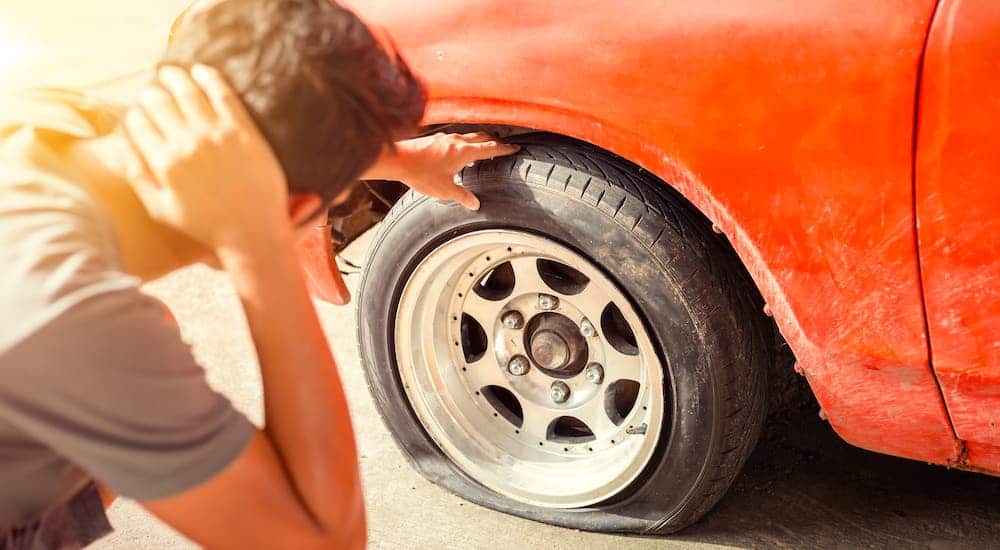 If you are storing winter or summer tires, it is best to store them in a cool, dry location away from sun and other weather elements.
If you are storing winter or summer tires, it is best to store them in a cool, dry location away from sun and other weather elements.
To sum things up, here’s a list of the most frequently asked questions, as well as some brief answers to steer you in the right direction when replacing your tires.
Although this answer does depend on a number of factors including the type of car, your driving style, etc., there is an average estimate for how often you should change your tire. In general, most vehicles travel about 15,000 miles per year, which equates to around 45,000 miles every three years. If you to take into account the tire mileage warranty and amount you drive over the course of a year (over 15k miles), this will give you a good indication of how often you will need to replace your tires.
This is a topic of much debate. However you will find most vehicles, regardless of if they are front wheel drive or all wheel drive, will wear the tires on the front more rapidly than the rear.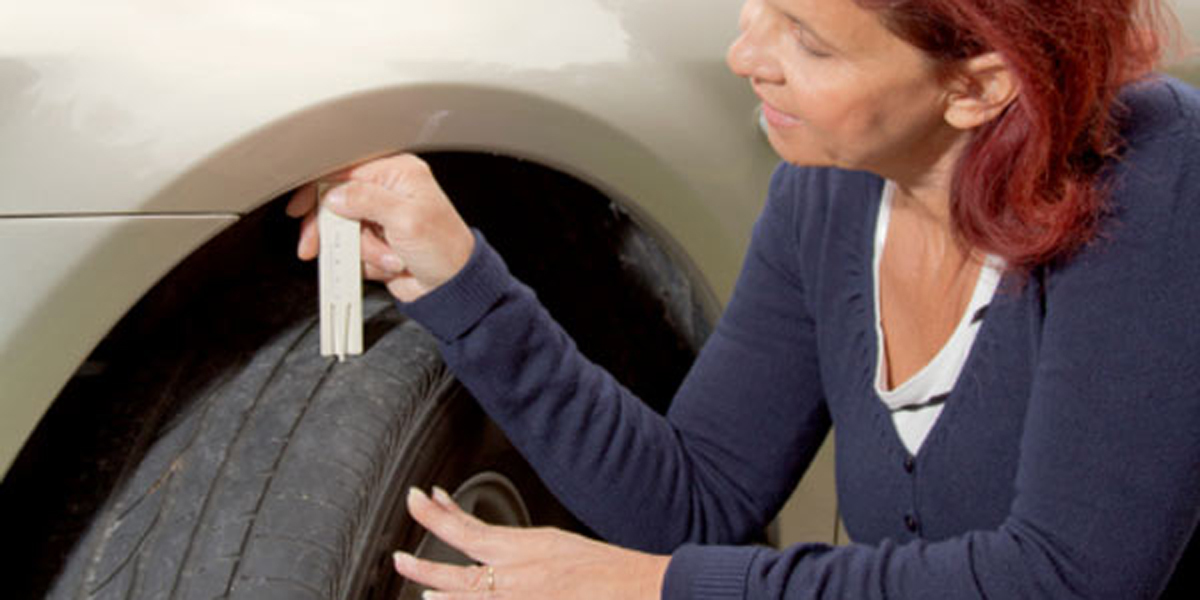 The front tires are responsible for the steering, acceleration and braking, while the rear wheels typically just follow. Most vehicles also have most of their weight on the front of the vehicle, causing the front tires to handle more load than the back tires.Since the wear and tear on the front and back wheels can be different, the answer to which tires wear faster, is typically the front tires.
The front tires are responsible for the steering, acceleration and braking, while the rear wheels typically just follow. Most vehicles also have most of their weight on the front of the vehicle, causing the front tires to handle more load than the back tires.Since the wear and tear on the front and back wheels can be different, the answer to which tires wear faster, is typically the front tires.
All-wheel drive vehicles must have all four tires replaced at once. You don’t have the option to replace just two at a time.
Because tires wear unevenly front to back, regular rotations will allow you to get longer use out of your set of tires by wearing the tread more evenly. Front tires will wear the outside edges down more quickly, so rotation allows you to always have the most tread on the outside of the tire. Not rotating will result in one set of tires wearing and likely needing to be replaced sooner than the other set.
First things first: check your vehicle’s owner’s manual to see if it has a recommended rotation scheme. Tires should be rotated roughly every six months or every 6,000 to 8,000 miles. A good rule of thumb is to rotate the tires every other time you get an oil change.
Tires should be rotated roughly every six months or every 6,000 to 8,000 miles. A good rule of thumb is to rotate the tires every other time you get an oil change.
Placing a penny head into the grooves of your tire can help you determine if the tire needs to be replaced soon. If you can see the top of Lincoln’s head, your tires are likely shallow and worn. Use this as an indication of when you should have a tire professional examine the situation.
If you are replacing only one pair of the tires on your vehicle, these new tires will have a deeper tread depth. Be sure to install the new tires onto the rear axle for better control when driving on wet and winter roads.
Ideally, you need to replace two tires with matching new ones. However, the most important thing is to install tires with similar performance features. For example, you should never put two high-performance tires with two touring tires.
Generally, it’s smart to replace tires in pairs (both in the front or in the back). Although replacing all four at once is the easiest, if you need to save money, you can do one pair at a time. If you’re wondering “can I replace just one tire?“ the answer is typically no. The difference in tread depth and stance can throw off your vehicle’s performance.
Most tire sellers would likely recommend that you avoid mixing tires from different categories. They can be different brands, as long as the internal construction and size are the same – but pay close attention to the stance of the tires and be sure they are very closely matched
Nope! Just make sure that all of the tires are evenly matched and appropriate for your vehicle and your driving habits.
It’s difficult to give a firm answer to this question.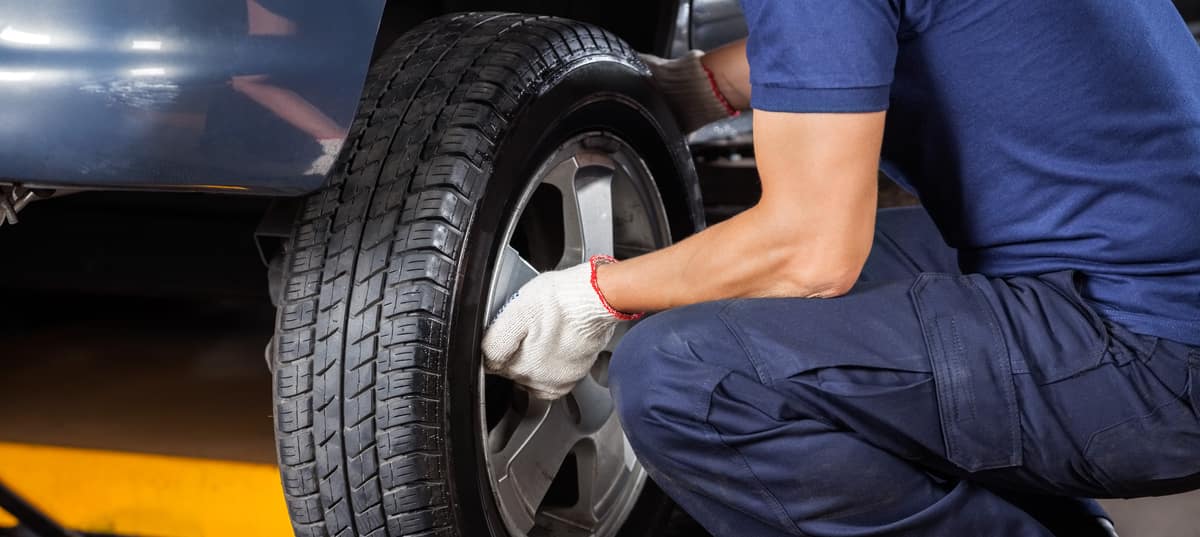 Generally, most tires typically last for three to five years. That’s when roughly 12,000 to 15,000 miles are put on the car annually.
Generally, most tires typically last for three to five years. That’s when roughly 12,000 to 15,000 miles are put on the car annually.
The best things to do to make your tires last as long as possible are:
Once you get your new tires installed, take it easy on the road for a while to break the tires in. New tires may feel different than the tires you replaced, since they are likely performing better than a worn tire, and have the latest technology.
Also, if you changed categories of tires, you might experience a big change in the feel of your drive. For example, switching from an highway to an all-terrain tire might change the roughness and noise of your drive, as well as your fuel consumption.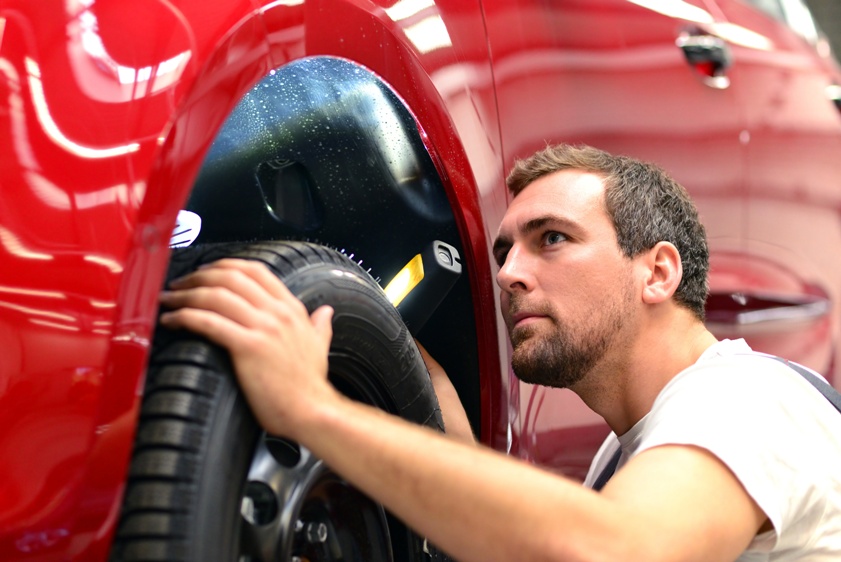
Deciding when to replace your tires is an important decision, both for the safety of your vehicle and that of others. Use the above guide to steer you in the right direction and help determine exactly when you should make the switch to brand new tires.
Additionally, deciding what to replace is important. You can increase (as well as decrease) the comfort, fuel efficiency, noise, tread wear, or other aspects based on the decisions you make with new tires.
Join Today For Free
Driving comfort, handling and safety level depend on the technical condition of tires. Car tires provide traction to the car in various climatic and road conditions. blog.ship-ship.ru
Driving comfort, handling and safety level depend on the technical condition of tires. Car tires provide traction to the car in various climatic and road conditions.
The tread is the outer layer of the tire. It comes into contact with the road, creates a contact patch and provides traction. The tread pattern differs in volume, consists of blocks, grooves, lamellas of a certain depth.
It comes into contact with the road, creates a contact patch and provides traction. The tread pattern differs in volume, consists of blocks, grooves, lamellas of a certain depth.
The tread is responsible for the grip of the wheels on dry, wet, snowy and icy roads. It removes water, dirt and snow from the contact patch. The system of blocks and grooves prevents the effect of hydroplaning, when a water cushion forms between the wheel and the road during rain.
The degree of wear of the tire tread affects the handling, maneuverability, stability of the car, and the length of the braking distance. There are requirements for the depth of the tread pattern. If the outer layer of the tire is worn out, then it is changed.
It is important to understand that worn tires are not able to cope with the tasks:
 One of the wheels may be above the road surface.
One of the wheels may be above the road surface. Tread wear is the main cause of deterioration in braking quality, poor handling and directional stability. At the same time, worn tires show equally unstable behavior on any type of road surface in rain, snow or dry weather.
Winter and summer tires differ in thickness, composition of the rubber compound, the number, shape and size of blocks and grooves. The selection of tires depends on the make and model of the car, body type and class, climatic and road conditions (city, highway, country roads, off-road), speed limit and driving style.
The new tires have deep grooves and numerous sipes that provide excellent traction. Manufacturers produce winter tires with three types of tread:
Spikes are used for driving on roads and ice that have not been cleared of snow. The spikes bite into the ice crust and split it, providing excellent traction. But when driving on dry asphalt, the spike loses its working properties.
The spikes bite into the ice crust and split it, providing excellent traction. But when driving on dry asphalt, the spike loses its working properties.
Velcro friction tires are suitable for driving on a dry clean road, melted and shallow snow, mud. The main difference between Velcro is the presence of lugs, special grip edges that increase the stability of the wheels on wet road surfaces.
Scandinavian tires are used in the conditions of the northern regions, which are characterized by extreme sub-zero temperatures and snowfalls. The main difference between the Scandinavian tread is wide sipes, massive numerous blocks cut by grooves.
In modern tire models, the tread height is 9-12 mm. The permissible wear level here will be from 4 to 6 mm. If the wear 'threshold' passes, the tire is changed regardless of how long it lasts.
Important: The tread of a winter tire is always 3-4 mm higher than the summer model.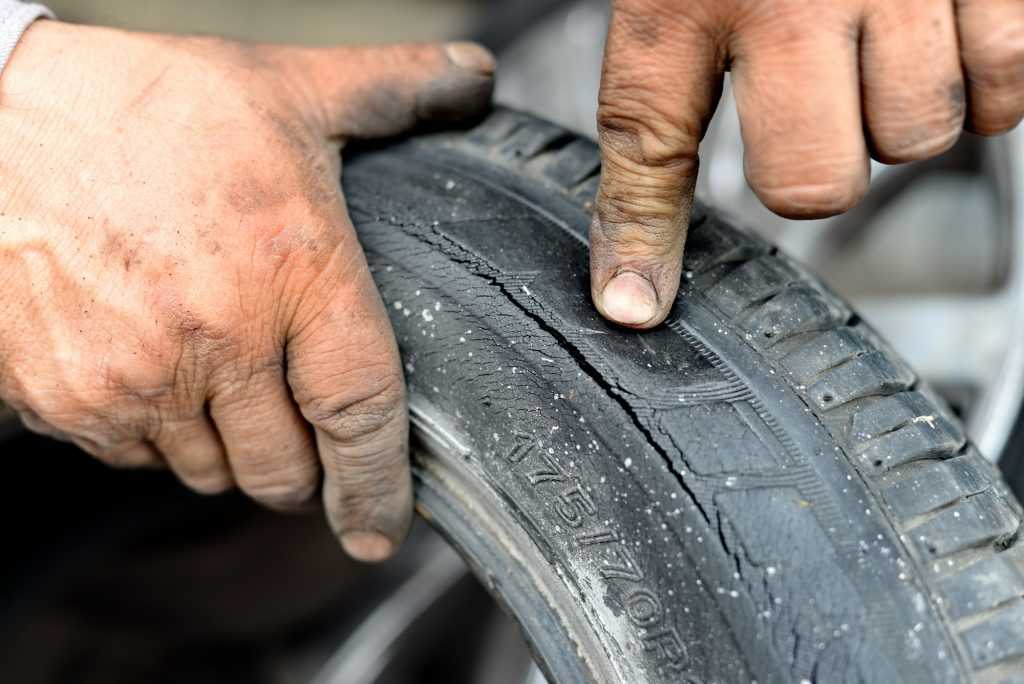 The depth of the Scandinavian tire pattern should also be sufficient - at least 8-9 mm.
The depth of the Scandinavian tire pattern should also be sufficient - at least 8-9 mm.
The need for replacement will also be indicated by special indicators located at the base of the tire.
The tread depth of summer tires is 6-8 mm. The minimum tread wear must be at least 1.6 mm.
The tread pattern must be clearly legible. Otherwise, the traction and grip properties of the wheels deteriorate, the tires cannot effectively remove water and dirt from the contact patch, and the effect of aquaplaning is possible.
For sports cars, the tread height is 12 mm. For SUVs, the height indicator increases by another 5 mm.
According to the rules of the road, the maximum allowable tread wear is:
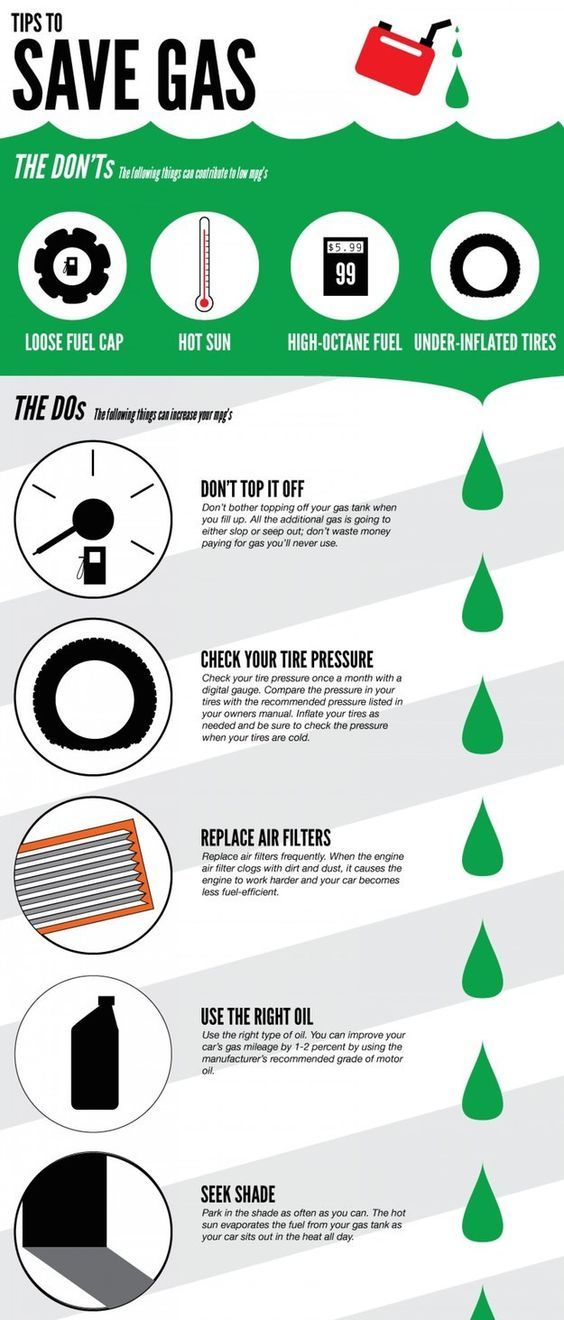 8 mm.
8 mm. The residual wear of the tread for minibuses and buses designed to carry more than 8 passengers is 2 mm.
In order not to get into an emergency on the road, the car owner should periodically check the wear of the tread pattern. This can be done in the following ways:
Take a measuring tool with a depth gauge - a caliper. Pull out the depth gauge, rest its nose against the base of the drawing. The caliper should rest against the top of the rubber.
You will see readings on a mechanical or electronic scale. If the value for summer tires is less than 1.6 mm, such tires need to be replaced urgently. For winter, this figure will be below 4 mm.
To make the reading as accurate as possible, measurements are taken from the base of the figure. It should be smooth, without protrusions.
Take a coin with a face value of two rubles. Put it in the groove. If the ‘meter’ deepened to the word ‘ruble’, the residual depth is 4 mm. If the word 'ruble' has disappeared - the depth is 6 mm. But if the protector hid only the beginning of the 'wreath', then 2 mm of the pattern remained. In this case, play it safe and replace the tires.
Put it in the groove. If the ‘meter’ deepened to the word ‘ruble’, the residual depth is 4 mm. If the word 'ruble' has disappeared - the depth is 6 mm. But if the protector hid only the beginning of the 'wreath', then 2 mm of the pattern remained. In this case, play it safe and replace the tires.
The ‘coin’ method is inaccurate and allows you to find out the approximate depth. It is used before passing the inspection or when buying tires with mileage.
Manufacturers today offer tires with special wear indicators. This is a special part of the drawing: it differs in color, shape, size.
On the surface of tires you can find the following indicators:
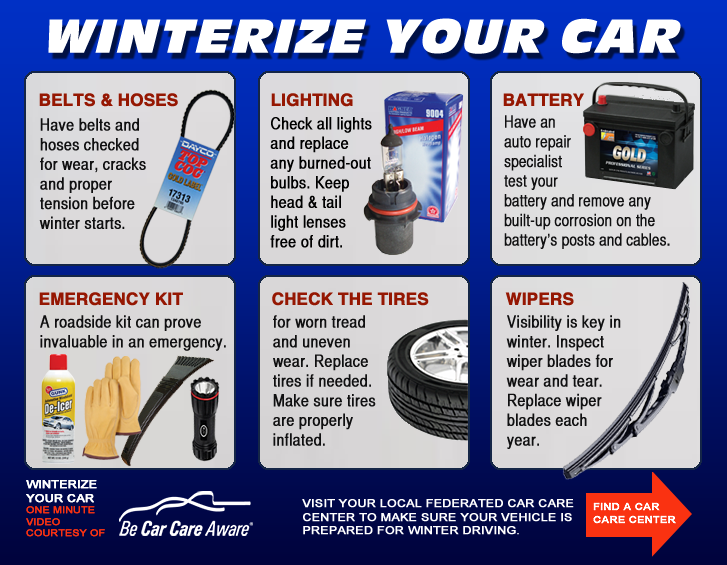
Tires don't always wear evenly. Car owners often face such a problem, and here are its main reasons:
When inflating wheels, follow the manufacturer's recommendations. Neglect of this rule will lead to excessive pressure in the tires.
Increased pressure increases noise, increases damage, reduces handling.
If the wheels are poorly inflated, there is a deflection in the central part. Decreased acceleration, increased fuel consumption, increased turning radius.
Under normal pressure, the rubber wears evenly.
When a wheel hits a hole, the wheel alignment is knocked off the pothole. Car owners are not always able to determine this malfunction on their own and in a timely manner. The indicator is - different wear of the tread.
Car owners are not always able to determine this malfunction on their own and in a timely manner. The indicator is - different wear of the tread.
Excessive camber angle (positive or negative) leads to abrasion of the rubber in the shoulder areas. The cover is bevelled. A car with such wheels cannot move in a straight line, and the driver has to constantly tighten the steering rack.
Excessive toe angle (positive or negative) results in a 'knocked down' tread. The drawing is assembled into an accordion, forming a bumpy, rib-like surface.
Due to defects in tires or rims, it is impossible to properly balance the wheels. Such a ‘malfunction’ leads to uneven wear, poor handling and vehicle stability.
The first sign of defective rubber is the appearance of shocks, the beating of the steering column.
Suspension condition should be checked annually.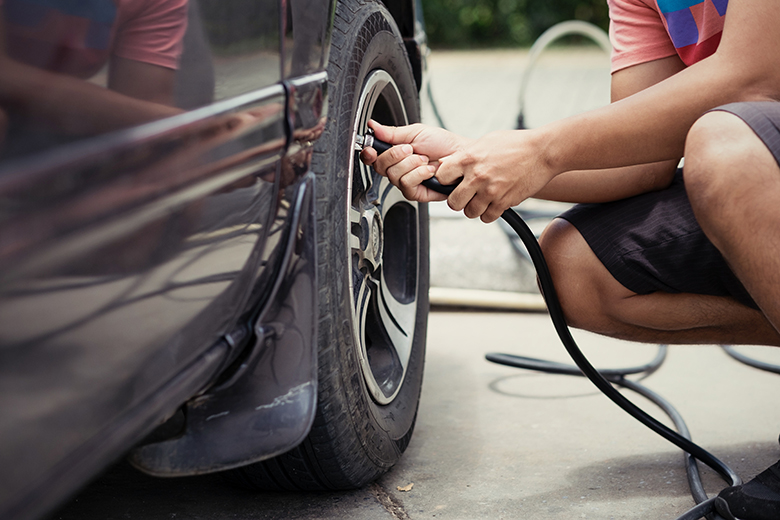 Worn parts or failure of this part of the undercarriage of the machine will also lead to uneven tire wear.
Worn parts or failure of this part of the undercarriage of the machine will also lead to uneven tire wear.
Tires with residual wear of the tread pattern, rubber with cracks and cuts are subject to replacement.
It is important to remember that tires are subject not only to abrasive wear, but also lose their performance under the influence of climatic conditions, exposure to road dust, reagents, and high loads. The result of such influences is a hardened tire covered with microcracks.
Therefore, tires need to be changed every five years. This is the life of the tire, after which it loses technical and performance characteristics, even if the height of the residual tread allows the car to participate in road traffic.
02/11/2020 2020-02-11
Tags: #summer tires #Winter tires #winter studless tires
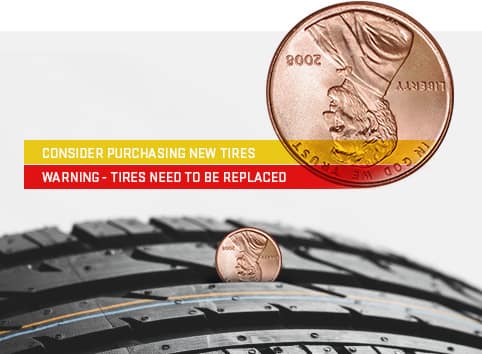 Shelf life, storage and service life
Shelf life, storage and service life A car tire is a rubber elastic shell that is mounted on a disc rim. It is she who is in direct contact with the surface of the roadway and is directly designed to reduce small fluctuations on the roads, as well as to compensate for flaws in the trajectory of the wheels. During operation, it is subjected to heavy loads of a diverse nature, therefore it naturally has its own service life, which is influenced by a number of factors.
Expiration date is the period during which the company guarantees the possibility of using the product for its intended purpose and bears full responsibility for defects that arose through its fault.
When buying tires, you need to make sure that no more than three years have passed from the moment of production. The date of manufacture and any other information is very easy to find out, it is indicated on the tire label among the general information about dimensions, design, speed and load ratings.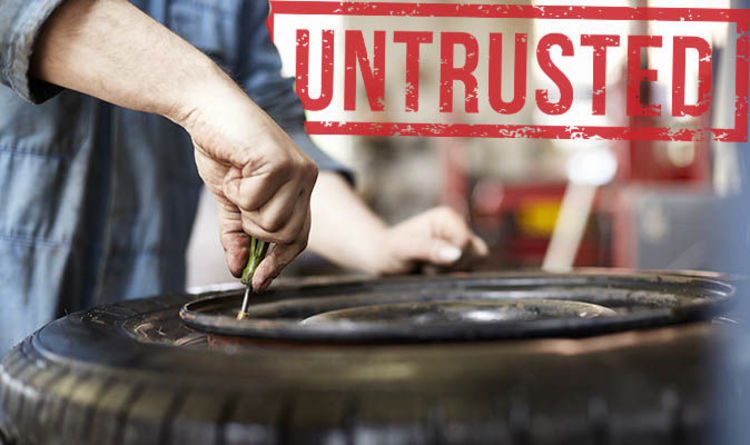
Tire production date
Russian legislation establishes the service life of car tires under warranty in accordance with GOST 4754-97 and GOST 5513 - 5 years from the date of manufacture, but for tires, first of all, the main indicator is the quality of the product, not time its use.
According to GOST, the average tire life should be calculated in the following order:
Experts recommend replacing tires before they reach their expiration date. Some motorists believe that rubber is suitable if it is rarely used, and at the same time its age is already 5-6 years old, but this is an erroneous opinion! Indeed, due to the fact that defects appear in tires during operation and storage, they are associated with its oxidation and cracking - at a critical moment, it can let you down.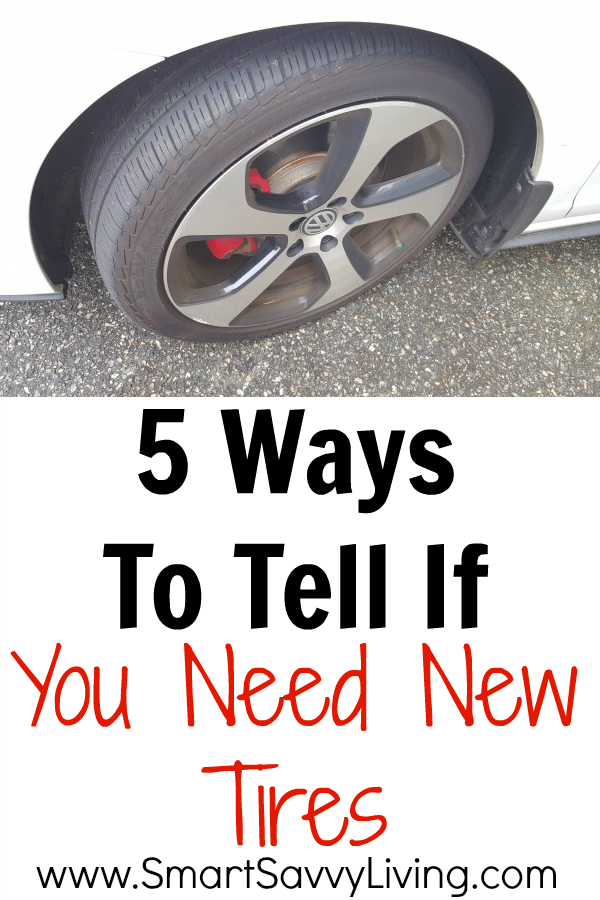
Shelf life is a certain period during which the product, subject to the established rules of storage and operation, must retain all its properties. If the shelf life has expired, this does not mean at all that the product is unsuitable for use, but its technical characteristics may decrease.
Tires can age through physical and chemical processes, this hypothesis applies to tires that are not used or little used. To prevent the aging process itself, special substances are added to the rubber compound that help counteract harmful chemical compounds with oxygen and ozone. Doing so will ensure that, when stored properly, the tire will meet the definition of a new tyre.
It should be noted that the warranty shelf life is not the service life of . The storage period for five years is set, not because the tire will deteriorate after that, but because, according to the law, the manufacturer does not have the right to establish a shorter warranty period, which is protection for the end user.
In recent years, many American experts believe that the shelf life and operation of car tires should be limited to 10 years. In turn, German experts believe that the expiration date of tires should be limited to 6 years, this also applies to new tires.
Rules and regulations for the storage of pneumatic tires according to GOST 24779-81:


For a complete list of rules and recommendations for proper tire storage, see the article “How to store car tires”.
Well-known brands of imported tires such as: Bridgestone, Michelin, Goodyear and Dunlop last up to 10 years or more from the date of manufacture, this period is generally accepted throughout the world. But the total shelf life and storage in the warehouse, from the date of issue, tires Continental is no more than 5 years.
Although, as we have already figured out, the storage conditions of tires mean a lot, not only new ones, but also those that were removed from the car until the next season. For example, nokian 9 tire expiration date0162 ranges from 3-5 years, subject to verification at least 1 time per year, after 5 years of use.
Unfortunately, the legislation does not establish the permissible storage periods for tires in a warehouse, but experts believe that a tire that has lain there for about 5 years is still equal to a new one.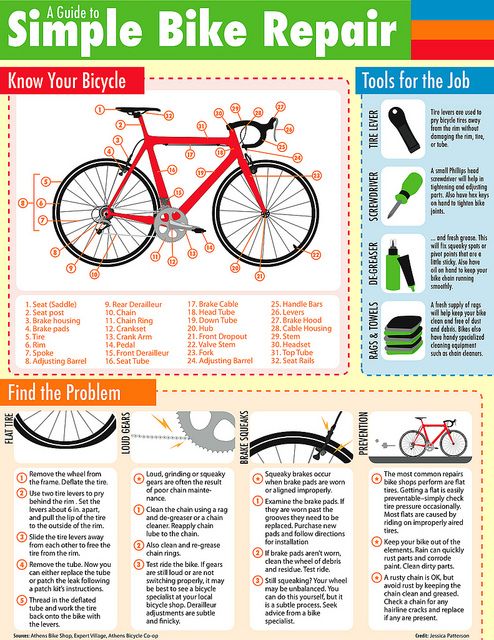
The tire life of a vehicle is the period of time during which the manufacturer gives a guarantee for tires and is fully responsible for any defects that will be revealed during their operation. According to manufacturers, tires should last at least ten years, although in practice they have to be replaced approximately every 5-6 years, in some cases even less.
There are many different factors that affect the wear of car tires, the main ones are listed below:
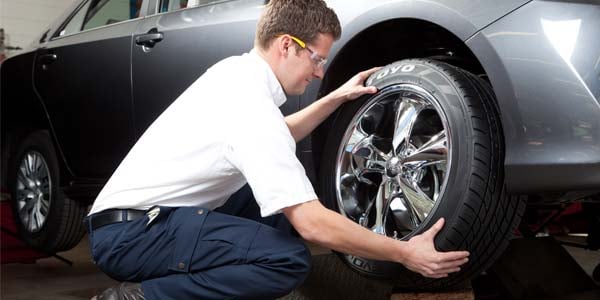
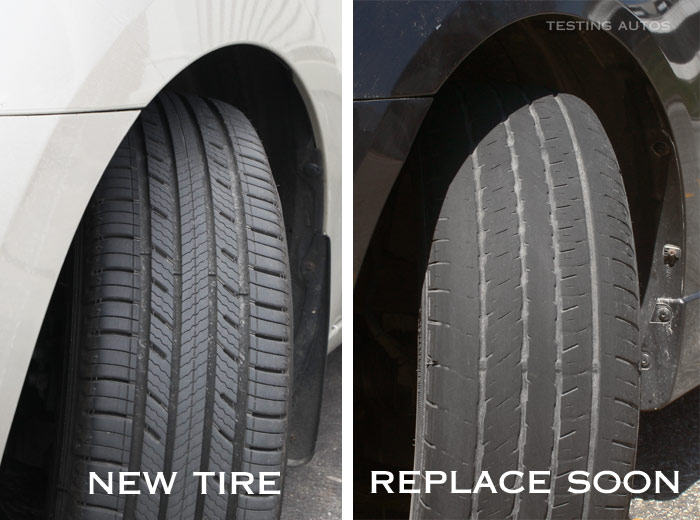
Next, we will take a closer look at the instructions for certain actions that need to be taken in case of wear on car tires.
When diagnosing tires, in addition to the fact that it is imperative to pay attention to the degree of wear, there are also other equally important factors indicating the end of the service life.
In order to determine when the service life of car tires ends with a detailed inspection, you need to pay attention to the following points:
 For summer tires, this parameter should be equal to more than 1.6 mm, in turn, for winter tires - more than 4 mm. If these parameters are less, then it is necessary to replace the tires. When the wear is uneven, then measurements should be taken in the area where the wear is most visible. Otherwise, if the tread edge is worn on only one side, then the camber-toe angle has been violated.
For summer tires, this parameter should be equal to more than 1.6 mm, in turn, for winter tires - more than 4 mm. If these parameters are less, then it is necessary to replace the tires. When the wear is uneven, then measurements should be taken in the area where the wear is most visible. Otherwise, if the tread edge is worn on only one side, then the camber-toe angle has been violated. 
When any defects were noticed in the tires, it is recommended to carry out a replacement, and not a rescue restoration, in order to at least somehow delay the period of use.
To prolong the life of car tires, it is necessary to periodically diagnose them.
In order to make your tires last longer, you need to follow certain rules of use:
Since there is always more wear on the front (driving) wheels, then every 10-15 times. thousand or at the time of changing seasonal tires, it is advisable to change it in places.
Swapping front tires to rear tires
Scheme of swapping 5 car wheels
Please note that although there are tires with a directional and non-directional pattern, you still cannot change the direction of rotation of the wheel.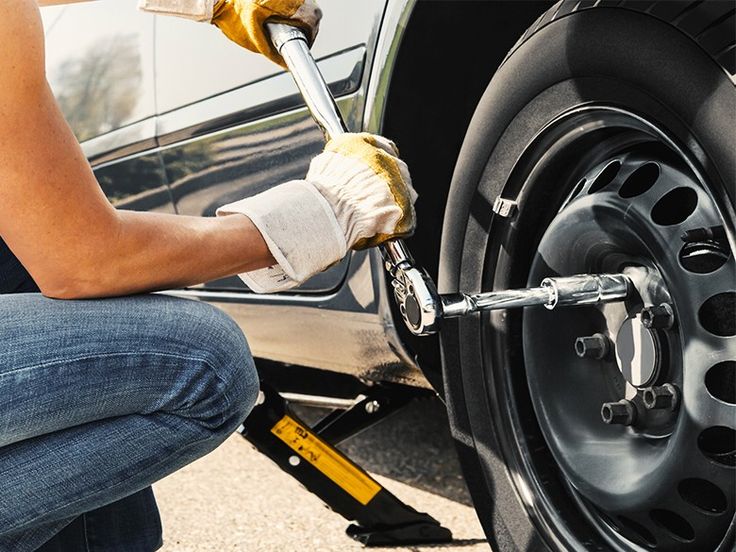 And in the second option, the front wheels must be reboarded before being installed back.
And in the second option, the front wheels must be reboarded before being installed back.
It is necessary to check if the tires are correctly installed in relation to the rims, which is usually indicated on the sidewalls of the tires, this is important, since if the tires rotate in the opposite direction to the design, all their performance will be significantly reduced in all modes of operation of the vehicle.
Non-directional tire replacement scheme
All-wheel drive tire replacement scheme

Experts recommend that you regularly check the condition of your tires, monitor pressure and tread wear. After all, it is much more profitable to fix a malfunction in the early stages than to change all the rubber later.